HOW TO HOOK Maggots
Share the HOW TO HOOK Maggots article:
share
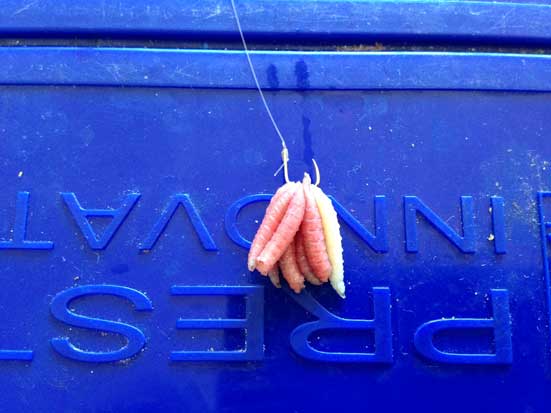
Bunch It
This is one of the most commonly used hook baits for commercial fishing, especially down the edge. It’s a big, visual and protein packed hook bait that carp can’t resist. I always use dead maggots when I’m fishing a bunch of maggots on commercials, they're a heavy bait that isn’t going to get wafted around everywhere and it’s a bait that always seems to catch me fish.
Big bunches of maggots can also be deadly on canals, I remember on one of the recent Drennan Knockout cup rounds on the Shropshire union canal – I was struggling for a bite and I just felt like I needed to try something else to fool those big old fish. A quick switch to five maggots, instantly resulted in a 1lb perch and I ended up winning the section by 12oz!
A quick switch to five maggots, instantly resulted in a 1lb perch and I ended up winning the section by 12oz!
Hook baits can be vitally important and one thing I’ve learnt over the past few years is to be open to changing hook baits and adapting your attack around what’s happening in your peg.
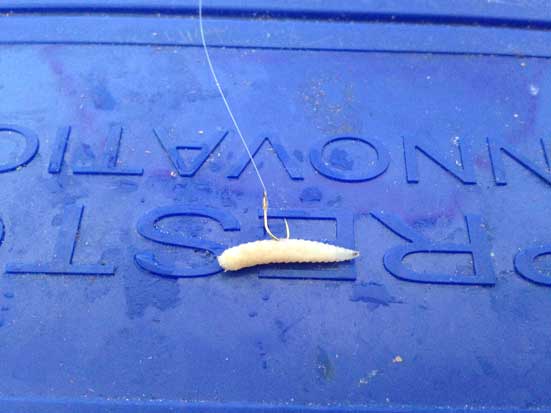
Sideways
The next time you go fishing, just chuck a maggot in the edge and see how it falls. Every time the maggots sink sideways, so why don’t we hook them like that? After all the whole principle of fishing is to disguise our hook baits to the bait that we feed. This is a really good way of hooking a maggot. You get a very good hook hold and it usually fools the bigger wiser fish.
You will see a common theme in my HOW TO HOOK blogs, I’m always looking for little edges that might catch me those extra fish that people might miss out on by going down the normal routine and not thinking outside the box.
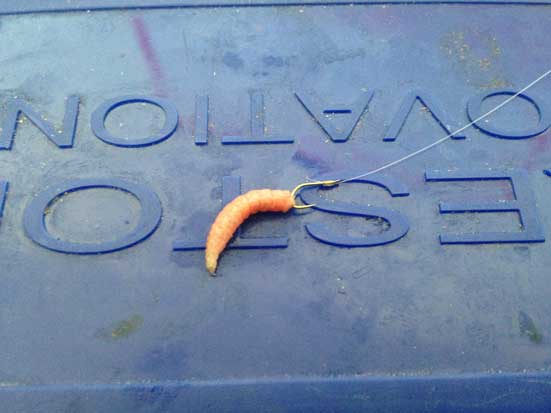
The Norm'
This is without a doubt one of the most commonly used baits, ever! Again, hooking a maggot is quite straightforward and doesn’t need much explanation. I just nick the maggot on top of the head, which leaves all of the hook exposed and gives you a great hook hold.
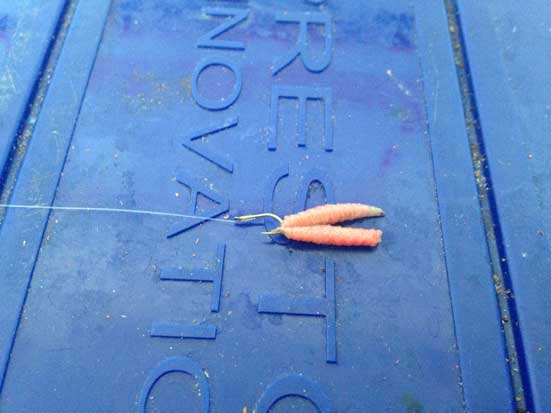
Double Maggot
There’s not a lot that needs to be said about this technique, everyone’s done it. However I have fined tuned it a little bit to maximise the effectiveness of this hook bait. I hook one maggot normally through the top of the head, but I then hook the other maggot through the other end, so they sit against each other top to tail. This massively reduces the amount of spin ups you’ll encounter, it’s very good when fishing the feeder or the waggler. I was once shown this by the legend Dennis White and I’ve done it ever since.
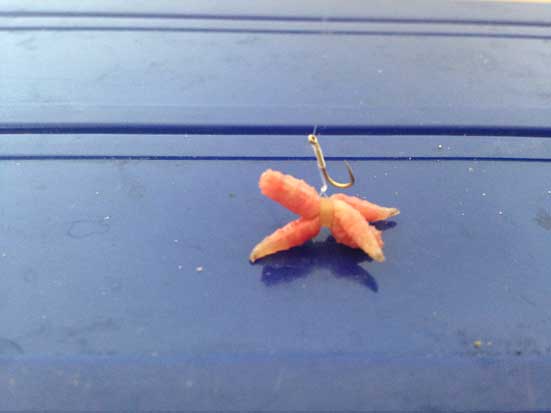
Band em’
Maggots in a band is all the craze at the moment. I have experimented quite a bit with it and this ingenious method really does work. I am a big believer in gaining an edge over my competitors wherever possible and banding maggots certainly gives you that edge. The fish haven’t seen it before and it often a case of making hay while the sun shines. Commercial fish quickly wise up to new methods and tactics so give this deadly tactic a try before anyone else.
Top Tip- always band dead maggots, I try to avoid using live maggots as they wriggle out of the band after you’ve caught a couple of fish on them, whereas the dead maggots can be used several times before you have to reband them. I like to band a few maggots, this acts as a target bait and seems to get a much quicker response than a single maggot.

Lasso it
This is very similar concept to banding maggots. Although lassoing an individual maggot can be equally as effective as banding them. This is brilliant for when you’re catching a mixed bag of fish. Ide are suckers for this, as well as big roach and chub. It’s so straightforward, I use a Quick Bander which opens up the lasso, slot a maggot in and then tighten the lasso down onto the maggot. I’ve had some brilliant catches using this, it’s so much more effective than fishing a single maggot a conventional way, especially when fishing shallow. You don’t seem to get pestered by nuisance fish. It isolates a much bigger stamp of fish. This is a very simple technique, but deadly when used correctly.
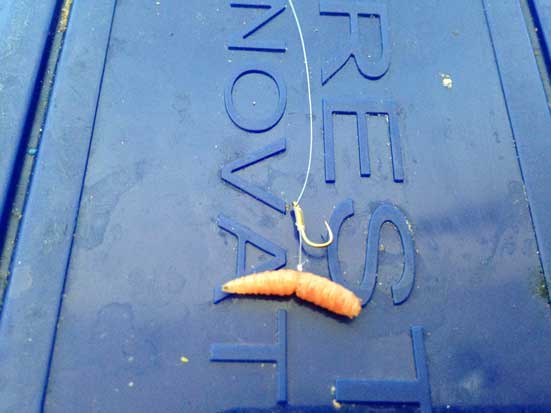
Thread it
This is definitely worth a try. It’s great for silverfish, when you want to keep the bait on the hook and catch several fish on the same hook bait. It disguises your hook within the hook bait, very similar to caster fishing. I always give this method a try if I’m missing a lot of bites or pulling out of fish. You can’t help but hook the fish when hooking the maggot like this. Be patient, wait for a proper bite and its fish on!
Top Tip
As you can see, I use dead maggots for a lot of my hook bait’s and fishing in general for that matter. Preparing dead maggots couldn’t be simpler, I simply put my maggots in a tight freezer bag, in the freezer overnight and take them out the morning of a match. This give you really fresh maggots that are obviously dead/dormant. I have had some maggots come back to life during the match, but if you keep them covered in water they will be perfect all day.
I have caught tons of fish on dead maggots, it’s a bait I simply wouldn’t be without. The main reason as to why I use dead maggots so often is one of the simplest yet biggest advantages to dead maggots. When a maggot is left in the water for a long period of time it obviously dies, therefore if a fish comes across a live wriggling maggot they might be suspicious and cautious of it at first, whereas if they come across a dead maggot it makes the maggot appear like it has been in the water for a long period of time, thus safe to eat. It might be a confidence thing, but dead maggots just work for me, I get a much quicker response and it keeps fish feeding in the peg for longer. There’s a load of reasons why I think dead maggots can out score live ones, I’ll run you through a few;
- Dead maggots done spin as much as live maggots, which reduces tangles.
- Silt can be a serious problem when fishing, and live maggots bury into the silt which obviously decrease’s the amount of feed in your peg. Dead maggots lie still right where you pot them in. There much more effective than live maggots.
- This also refers to slopes on islands. I have seen how far live maggots can crawl down the sloping shelves on canal style lakes and you could be fishing up to three feet away from where you’ve fed the maggots. Dead maggots again, eliminates this problem.
- Dead maggots don’t get caught around the point of your hook, which can result into lost/bumped fish.
- The stamp of fish you catch on dead maggots is much bigger than live ones, they seem to fool the bigger, wiser fish. You also seem to avoid a lot of the smaller nuisance silverfish when fishing with dead mags, which is a massive bonus when fishing on commercial fisheries.
I would add that I do use live maggots, they are unbeatable of rivers and canals when fishing for roach, pearch, dace, chub etc. However I always, always use dead maggots when fishing for skimmers or bream, or any big silverfish, as well as all of my commercial fishing! If you don’t use dead maggots, you’re missing out.





